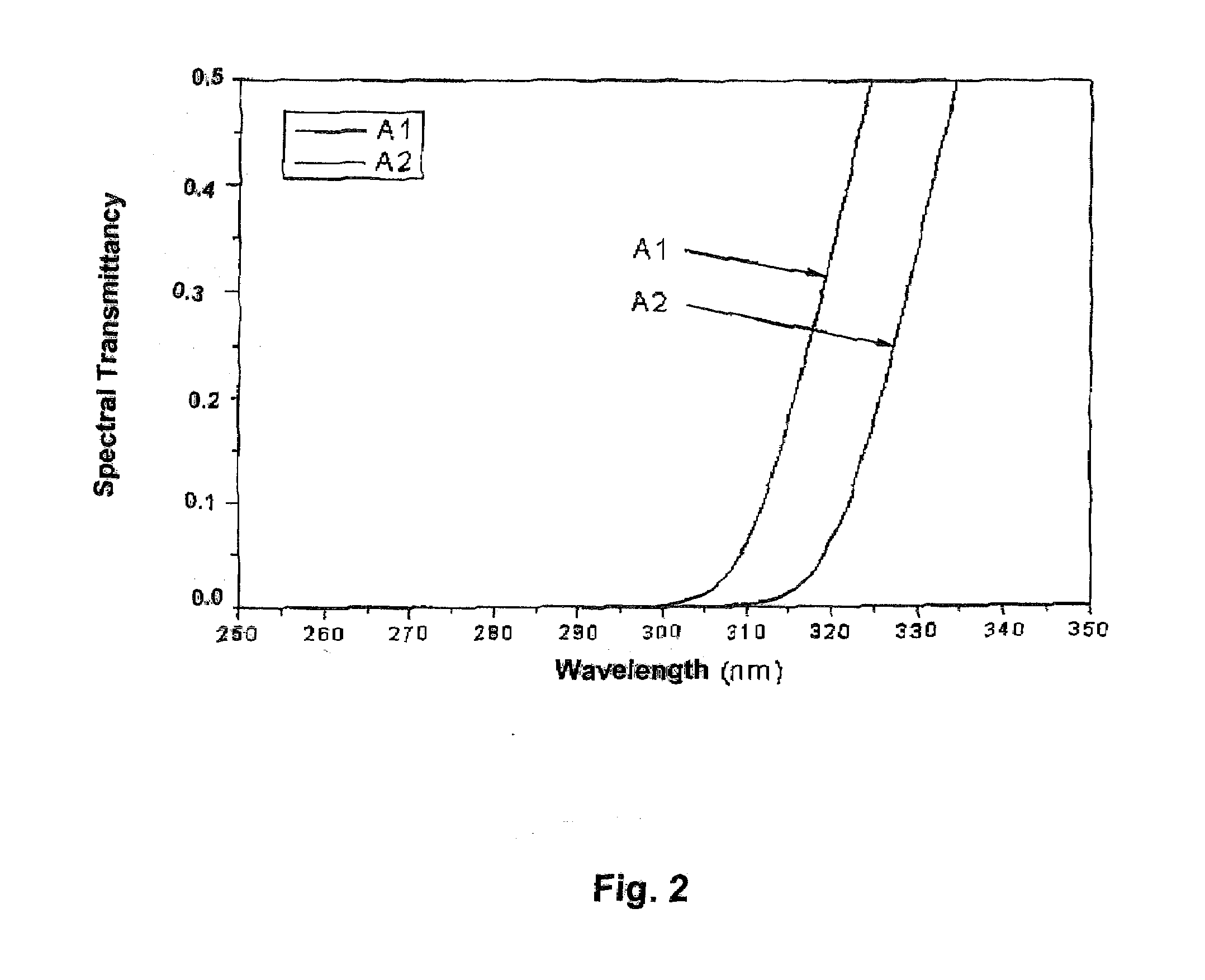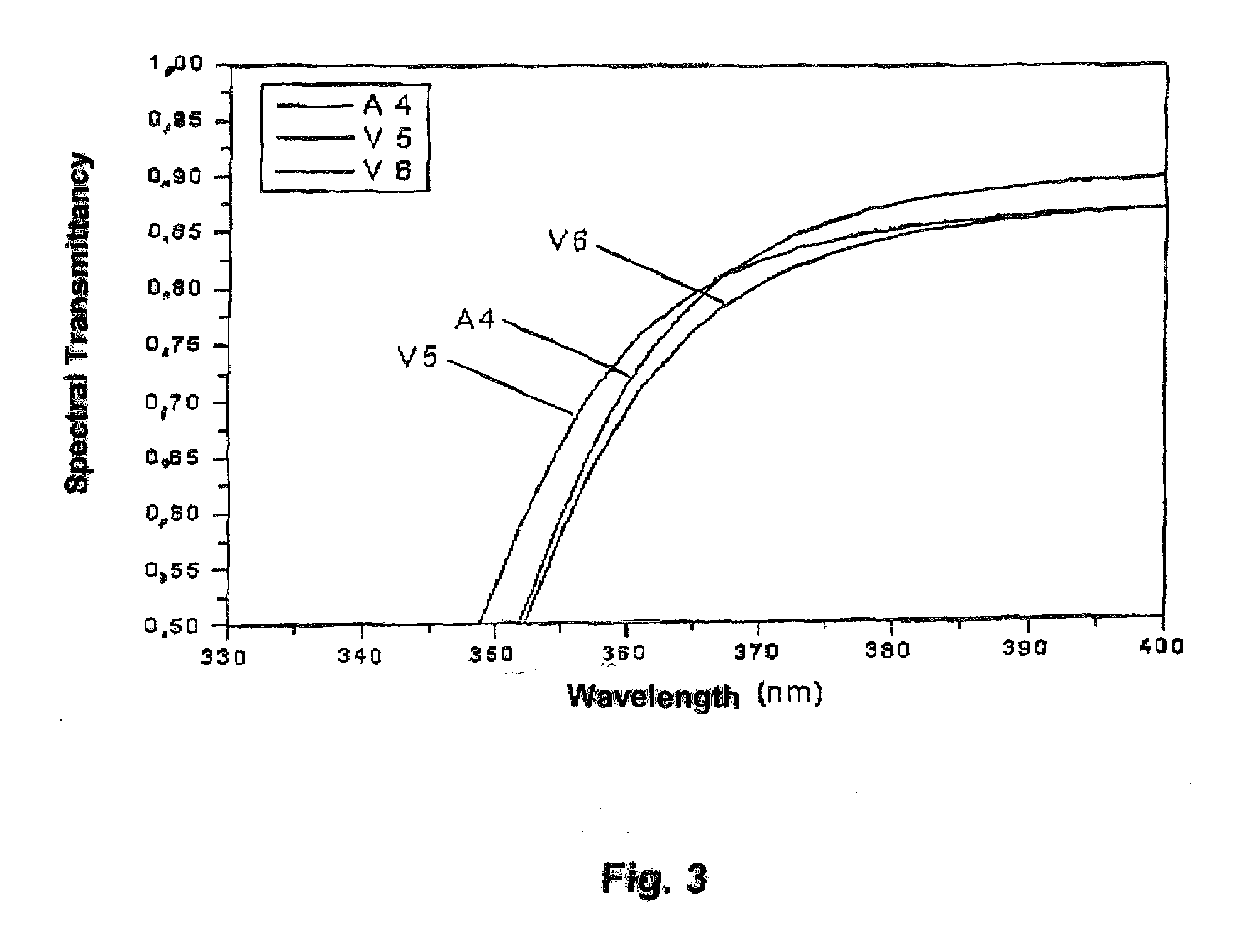Uv-radiation absorbing glass with reduced absorption of visible light and method of making and using same
a technology of visible light and absorption glass, which is applied in the field of manufacturing uv radiation absorbing glass, can solve the problems of high transmission cost, high cost, and damage to surrounding components, and achieve the effect of effectively blocking uv radiation and high transmission ra
- Summary
- Abstract
- Description
- Claims
- Application Information
AI Technical Summary
Benefits of technology
Problems solved by technology
Method used
Image
Examples
examples
[0056]The raw materials for the glasses A1 to A14 according to the invention and the comparative glasses V1 to V6 of the prior art, whose compositions are listed in Tables I to Va and Vb, were melted. The raw materials were melted in a quartz glass vessel at a temperature of 1620° C. and refined. The absorption and / or transmission of the resulting glasses were measured.
[0057]The transmission results are shown in FIGS. 1 to 5. FIG. 1 shows that glass A1 and A2 according to the invention have about the same transmission behavior, which is compared with the transmission behavior of an example of the glass V1 according to the state of the art. As should be readily apparent, the transmission in the visible range is largely constant until about 400 nm in the case of the glasses according to the invention and then sharply decreases at about 315 nm. The glasses according to the invention thus have a sharp UV-absorption edge, while in contrast the glass V1 has a strong decrease in its transm...
PUM
| Property | Measurement | Unit |
|---|---|---|
| Fraction | aaaaa | aaaaa |
| Fraction | aaaaa | aaaaa |
| Fraction | aaaaa | aaaaa |
Abstract
Description
Claims
Application Information
 Login to View More
Login to View More - R&D
- Intellectual Property
- Life Sciences
- Materials
- Tech Scout
- Unparalleled Data Quality
- Higher Quality Content
- 60% Fewer Hallucinations
Browse by: Latest US Patents, China's latest patents, Technical Efficacy Thesaurus, Application Domain, Technology Topic, Popular Technical Reports.
© 2025 PatSnap. All rights reserved.Legal|Privacy policy|Modern Slavery Act Transparency Statement|Sitemap|About US| Contact US: help@patsnap.com



